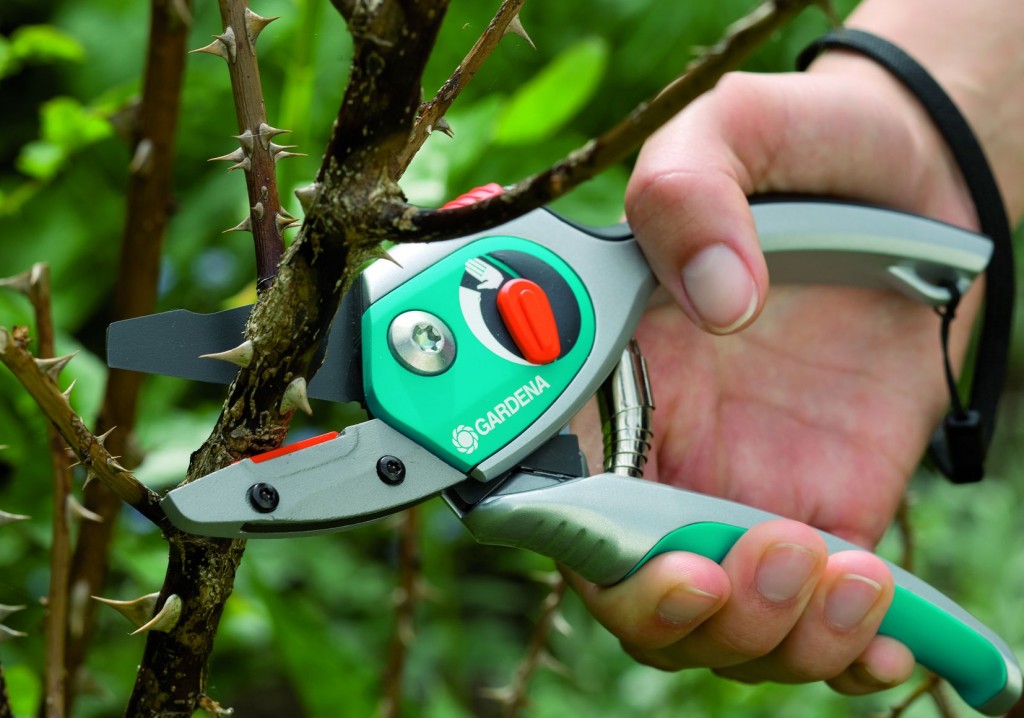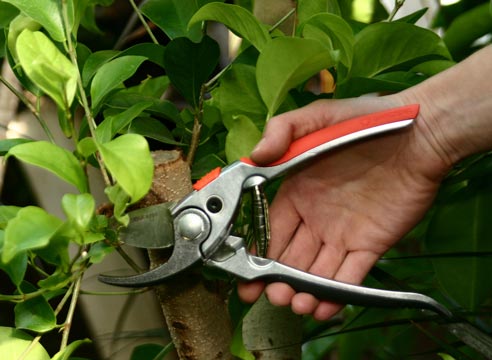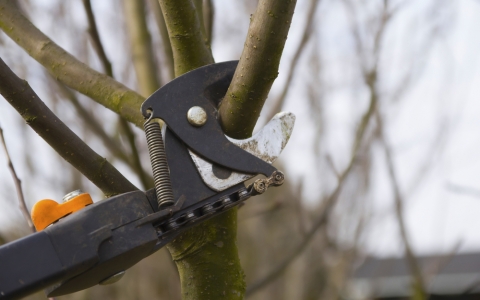How to choose a garden tree pruning tool
Content
What is a tool in the garden for?
Early spring and late autumn are the times when pruning is done. Remove branches that have dried or damaged during the winter, shoots that will not bear fruit or will not withstand the severity of the fruit.

These branches can be of different thicknesses, be at different heights, in order to more easily cope with this work and not harm the trees, they use different garden tools. Usually every household has a pruner. If you have a young garden, then one may be enough for the first couple of years. It does an excellent job of pruning thin branches less than 2.5 cm in diameter. When the time comes to remove old thick branches or entire trees, you will need a garden saw (hacksaw). A delimber is used to work inside shrubs or to cut branches growing at a height.
All gardening tools must be very sharp, otherwise you will not get an even cut, which means that instead of rejuvenating and healing, you will torment the trees. Minimum requirements are imposed on them:
- comfortable safe non-slip handle;
- the correct shape - strongly tapered ends at the pruner and lopper (to get wherever you need it);
- strength of the material, so as not to break from significant efforts.
Such tools, more precisely, their pens, are usually painted in bright colors - it is easier to find it in the grass or among the branches.
Video "Choosing the right pruner"
Secateurs
There are two types of secateurs:
- bypass;
- with an anvil.
The most common are bypass secateurs. They cut in the same way as scissors, only one blade is wide, convex, and the second is much smaller, it is concave. A wide blade is called a working blade, and a narrow blade is called a supporting one. When using a bypass pruner, the working blade should be positioned on top, slightly facing the branch from which it is cutting, then everything will work out well. When buying a bypass pruner, you can try cutting paper with it. If he has not chewed the paper, then the shoots in your garden will be all the more good at cutting.

An anvil pruner does not cut like scissors, but like an ax. The sharp working blade is sharpened on both sides, it cuts until it hits the anvil. Such a pruner is more suitable for pruning dry branches, it is difficult for them to get close to the very base, and the bypass pruner cuts live branches better.
What to look for when buying? Do not take a pruner with a stainless steel blade - it will dull very quickly. It is much better if it is made of hardened steel, then you can use it for several years and not sharpen it. Better yet, if the blade is chrome or teflon coated. It's great if the pruning shears have a stepping mechanism, this will help a lot when pruning thick, sturdy branches. It is very convenient if there are rubber pads on the handle - it is comfortable to hold and the hand does not slip. As for the springs, the tape type is considered to be more reliable than the wire type.
Lopper

The lopper is the same pruner, but only with long handles. They work with both hands at a height, where it is impossible to reach from the ground with a pruner, or in thickets of bushes.It is able to cut thick branches up to 5 cm in diameter. There are loppers with telescopic handles that extend several meters.
This is an advanced tool for your garden, it can be not only mechanical, but also electric and gasoline. Gasoline and electric, of course, work much faster, require less physical strength than mechanical. But on the other hand, they have a higher cost and you will constantly have to spend money on food during operation. And gasoline still makes noise and emits harmful gases. If you have a huge garden, then it is worth considering which one to choose. And if only a few trees and shrubs grow, then you can get by with a good quality mechanical tool.
Garden saw

When replacing trees or pruning thick branches, use a garden saw. It should not be confused with a hacksaw for wood. A garden saw has teeth of at least 5-7 mm, they are hardened and sharpened so that they perfectly cut in two directions. Always remember that we need a tool for pruning living trees, and we need to produce it with the least loss for trees. And a hacksaw is not suitable for this, it can only be used when cutting dead wood.
Garden saws can be with a straight, curved and bow-shaped blade with a length of 30-35 cm. When choosing, the thickness of the blade matters: too thin can break under load. The best option is hardened steel, and the handle should be comfortable and not slippery, preferably rubberized.
There are folding garden saws with a blade of only 20 cm, but with an extension pole. When pruning thick branches, use the saw from the bottom and top. The branch must be fixed, otherwise it can break off under its weight and the effort directed at it. If this is not possible, then they cut to half from the bottom, and then finish from the top.
Two more gardening tools - a knife and scissors - come in handy for trimming shrubs and removing unwanted irregularities. Such a minimum of garden tools will help you always keep your garden and cottage in order.
Tree Shaping Tool Video
The choice of these components is not easy, so it is important to take it seriously. As an example, you can check out the information from the video below.
